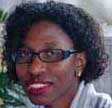Articles in the Positioning Category

Theoretically in the simultaneous observation of the high-precision GPS network solution mode, the selection of the independent baseline vector can be arbitrary with the same adjustment. But in the real situation, the results varies in different selections for the model of baseline solution is imperfect[1].

For the blind and partially sighted the visual cues which are a significant part of monitoring the environmental flow are either severely limited or non-existent. Thus the challenge is to be able to use man-made sensors and technology such as the smart phone based sensors to assist such individuals in monitoring the environment and collecting cues/ data about the environmental flow.

GPS was offi cially declared to have achieved full operational capability (FOC) on July 17, 1995, ensuring the availability of at least 24 operational, non-experimental, GPS satellites. To meet the future requirements, the GPS decision makers have studied several options to adequately modify the signal structure and system architecture of the future GPS constellation. The modernization program aims to, among other things, provide signal redundancy and improve positioning accuracy, signal availability, and system integrity (El- Rabbany 2006 ). Unfortunately, even with the modernized system, there exist situations where the GPS signal may be partially obstructed, e.g. in urban canyons, which in turn affect the availability and reliability of the PPP solution

Positioning with GPS can be realized two main ways: i-Single Point Positioning (SPP), ii- relative positioning. When the high accuracy is required, the accuracy obtained from SPP is not enough and for those applications relative positioning method have to be considered. However in this method, there should be at least two receivers to collect the data and software to process these data.

This paper is going to provide a concept of a new system for positioning the target bees. The biologists eagerly wish to collect the bodies of the bees in order to find the causes of the colony collapse disorder (CCD) of bees. As we know it, there are several ways used to find out and trace animals. For example, the scientists set up the transponders or the GPS trackers on the top of shells of thalassians or on the feet of migrant birds by ringing. These methods make great contributions for tracking and studying in the field of the biological research. However, how to track or position small insects, like cicadas, butterflies, or bees, is still a problem needed to be solved. The obvious crux of the problem is the size and the weight of the devices which are not suitable for fitting on such a small insects.















 (5.00 out of 5)
(5.00 out of 5)